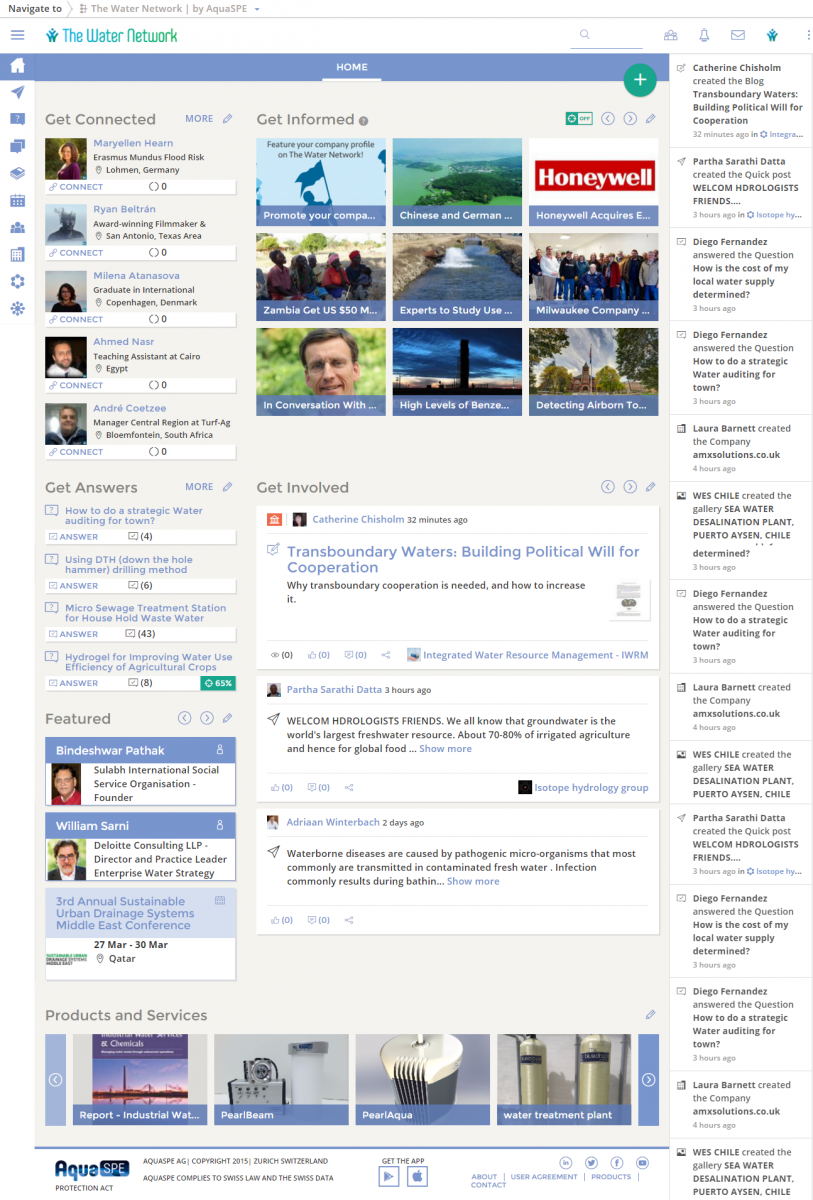Opening a Knowledge Network - How to Do It and What Are the Benefits

Posted by TallyFox on 23 December 2016
From ancient times, people have discovered that one of the most effective techniques of transferring knowledge from person to person is to share it in a community, so they started creating communities for people to gather and address issues. The first knowledge networks were organised around a need.
With the expansion of software in general, networks of people are able to communicate and collaborate ‘virtually’ across the world, anytime and anyplace.
One of the examples is certainly The Water Network, an open knowledge sharing network organised around a need to solve the world’s water crisis, as they say: ”One question and answer at a time”.
This is a very strong goal, but a strong goal is needed if you would like to set up a strong knowledge sharing system.
Today, The Water Network is the largest knowledge sharing platform and business exchange for the $620 billion water sector, and it is built on Tallium platform.
How are successful open knowledge networks created?
Addressing a need
As The Water Network example shows, a knowledge network will be successful if its existence solves a problem, and if there are people interested in solving that problem. A network envisioned to exist just for the purpose of sharing knowledge, without clearly outlining the benefits, will not grow past early adoption.
Building the wisdom of the crowds
The goal behind building the wisdom of the crowds is to obtain individual knowledge (signals) while eliminating biases or misinformation (noise) which can done by inviting and gathering experts. For the community to become wiser than the individuals, the distribution of knowledge must "bracket" the actual value. In essence, a successful knowledge network requires that experts which are a part of it are knowledgeable, incentivised to share their knowledge, that the responses to the issues are obtained independently from each other, and that there is a diversity of knowledge to prevent any systematic bias.
Sounds easy? It’s not.

Building the community: The benefits of Wikipedia model
The Wikipedia project has developed one of the largest and best-known open knowledge communities. This principle has become a model for many similar efforts, both public and commercial. For these reasons, issues of value, processes and motivation within the Wikipedia knowledge community have attracted the attention of contributors who continue to share their knowledge in order to build something valuable.
However, Wikipedia's policy under which anyone can contribute has yielded a lot of trust issues. Issues such as deliberate deletion of content or the addition of false or irrelevant information has prompted Wikipedia staff to invest in anti-vandalism bots created to automatically prevent this kind of damage and more editors who are supervising the knowledge sharing process.
The Water Network is built on Tallium platform, and while the Wikipedia inspired way of creating valuable content is present, empowering the members of the network to contribute knowledge every day, not every contribution is valued the same. Member profiles clearly showcase the expertise of the contributor, and the community reacts by upvoting the answers to the questions asked, reducing the noise and promoting the knowledge.

User experience: More important than ever
The biggest hurdle to the success of a knowledge management system adoption or virtual collaboration solutions is getting people to use them and this is where user experience is vital.
User-centered design methods and usability testing can help recognise the needs of the users and deliver the right experience through the development process.
Earlier in 2016 we did an interview with Vishakha Rajput, the COO of The Water Network in which she outlined the way Tallium’s interface has helped increase the engagement on the platform because members have started using the features they haven’t used before.
The added benefit of the Tallium platform is that it is completely configurable, so it can be adapted to users’ needs enabling the features they need, and disabling the features that would only clutter the experience.
Organisations who invest time and resources into creating open knowledge networks will definitely reap numerous benefits, and we are here to help them do that. This article is the first step.


Comments
Leave a comment